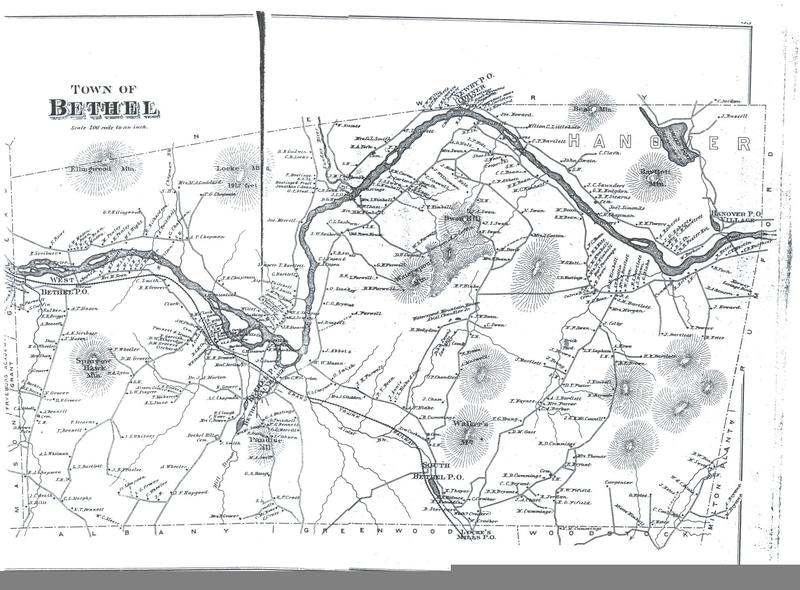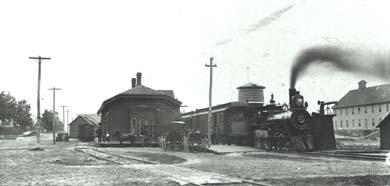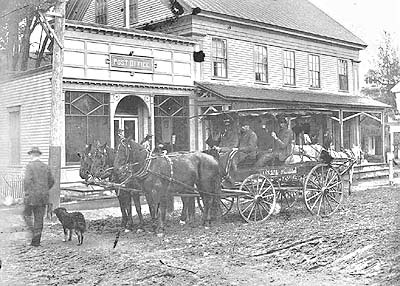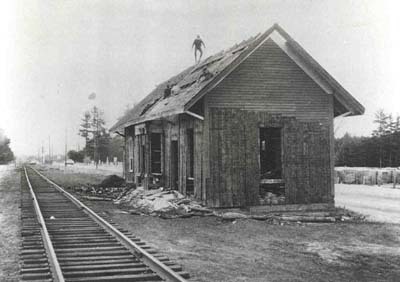Getting Around
Bethel's system of roads extended into every district of the town by the time this 1880 map was published in the Atlas of Oxford County, Maine. In 1843 a two-thousand acre area of Bethel (upper right hand corner of map) lying north of the Androscoggin River was joined with the settlement of "Howard's Gore" to create the town of Hanover.
A half-dozen primitive but picturesque river ferries positioned along a fifteen-mile stretch of the Androscoggin once provided safe transport for Bethel's citizens. Shown here is the Bartlett/Bean ferry, which operated (utilizing the waterway's current to generate propulsion) from 1830 until 1910.
To prepare the way for a permanent and dependable crossing over the broad and often unpredictable waters of the Androscoggin River, a toll bridge company was organized by town vote in 1861. It was not until 1869, however, that this huge three-span, double-lane covered bridge between Mayville (a village on the north side of the river named for the profusion of Mayflowers found there) and Bethel Hill was opened to local traffic. Attributed to the drafting skills of Bethel architect Thomas Holt, the structure was demolished in 1927.
The arrival of the Atlantic and St. Lawrence Railroad in Bethel took place on March 10, 1851. First proposed in 1844 by Andover native John Alfred Poor as a way of boosting Portland's dwindling mercantile trade and providing a winter link to the sea for Montreal to the north, the railroad nonetheless brought great economic benefits to the dozens of small New England towns scattered along the line. Built in 1865, Bethel's railroad station (left center) stood near the junction of Main and Railroad streets until 1968. The Bethel Chair Company mill, established in 1886, appears at far right.
The Swift-Wiley Block on Main Street, with the Charles Davis stage in the foreground, circa 1896. Transporting "baggage, express, and mail matter," as well as passengers, this open coach (with canvas curtains that could be dropped during stormy weather) for many years covered the twenty-eight mile route from Bethel to the Lakeside House hotel on Umbagog Lake, near Upton. Davis's stage, and others like it, made daily connections with the morning train from Portland and the afternoon train to points east.
The end of passenger and mail service on the Grand Trunk Railway in this region in 1960 caused the abandonment of many small stations along the line. The conversion to more efficient diesel locomotives also drastically reduced railroad employment all along the line. The depot at West Bethel ("Allens") was razed in 1967.
The twentieth century brought major developments to Bethel, beginning with the arrival of the first automobile in 1901. The popularity of the "horseless carriage" eventually transformed Bethel from a place of numerous shops where a wide range of products and services could be had, to one of fewer businesses of a more specialized nature. Bennett's Garage stood at West Bethel village until 1933.







